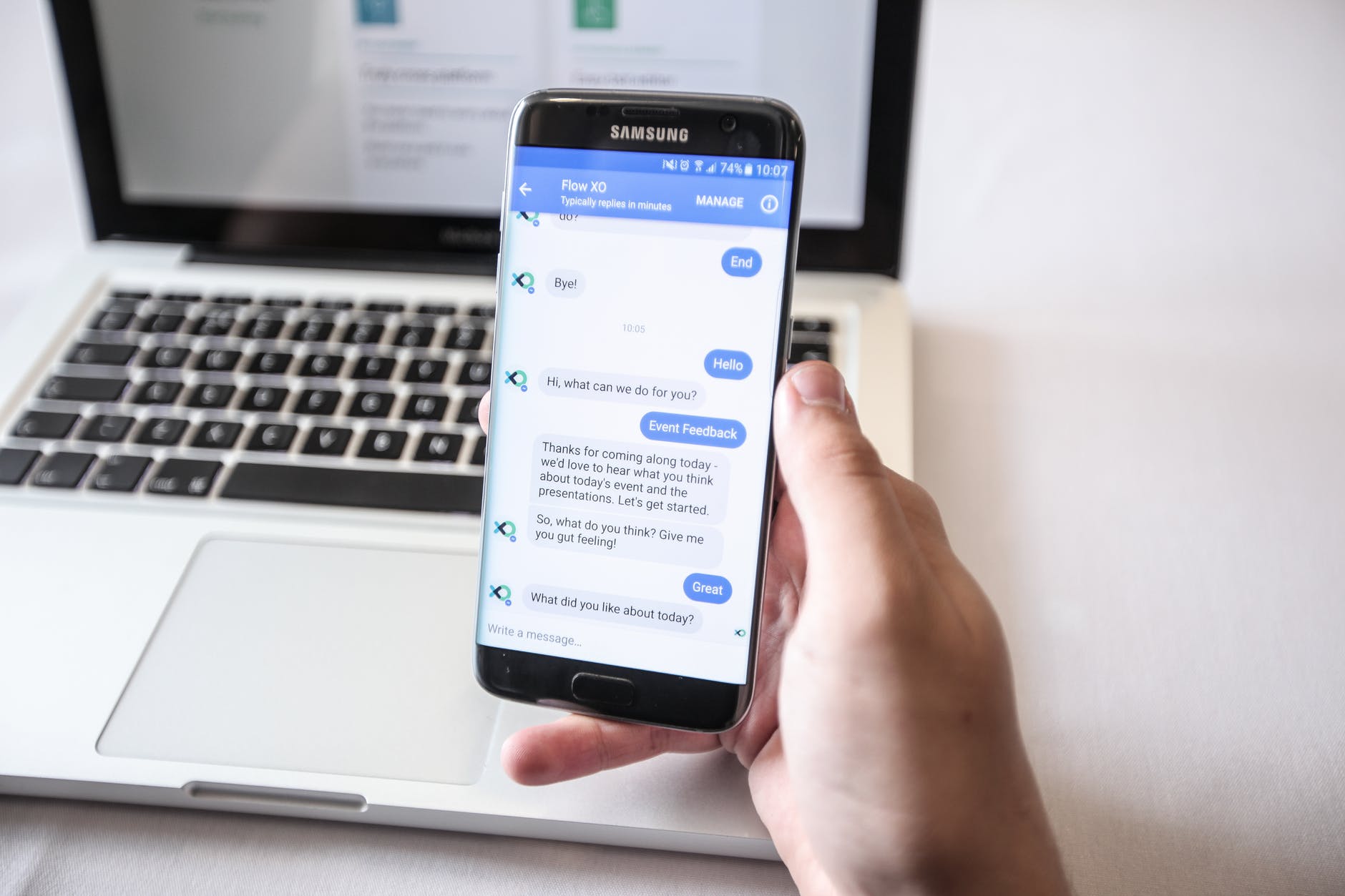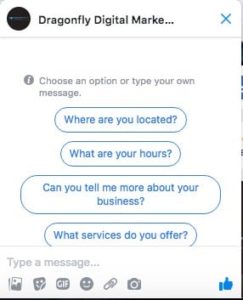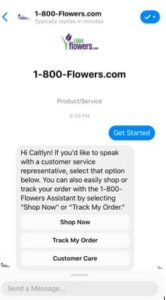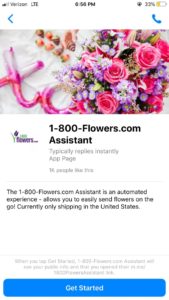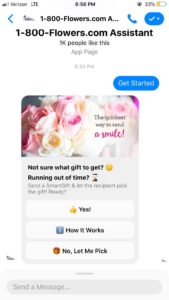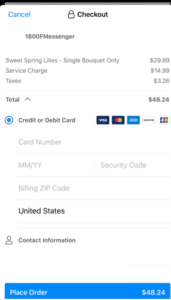You visit a local restaurant’s Facebook page and a little messenger box pops up in the corner. You see an automated greeting, “Welcome to our page! How can I help you?” then “Let me know if you have any questions.”
You visited the page to find out how late the restaurant is open, but instead of searching in the About section, you type the question into the message box.
“When are you open?”
You receive almost an immediate response – “Our hours of operation are Monday through Friday, 8 a.m. – 9 p.m., and Saturday 8 a.m. – 5 p.m.”
You just had a conversation with a Facebook Messenger chatbot. And according to a recent survey done by Oracle, 65% of consumers prefer using a messaging app when contacting a business, and more than 80% of businesses want a chatbot strategy in place by 2020.
What is a chatbot?
Why businesses should have a chatbot strategy
Why chatbots are better than email
How to create a Messenger bot
How do your customers find you?
Next Steps
What is a chatbot?
A chatbot is a type of automated messaging software built into Facebook’s platform that can automatically converse with people, answer questions, and understand tasks. Chatbots can save your customers time from searching for answers, and provide an alternative solution to placing a phone call to your customer service line.
Facebook Messenger’s chatbot exists within Facebook Messenger. Each month, chatbots exchange:
- 2 billion messages…
- With more than 1 billion people…
- Through more than 300,000 active Messenger chatbots.
The interesting thing about chatbots is they are a type of artificial intelligence – not only can they understand and respond to conversations, but they can also learn from them. With each interaction with the customer, the bot can learn from what they are saying, and translate the data into your software, giving you real-time information and feedback.
Why businesses should have a chatbot strategy
Most businesses tap into traditional marketing strategies like digital display, email, social media, print publications, billboards, TV, radio, etc.
As the importance of digital, social and email marketing grows, marketers are looking for new, easy ways to talk to – and with – their customers. A recent Nielsen survey found that messaging is the second-best way to communicate with businesses and customers. Using a chatbot is easy, cheap, and effective, and frees up your customer service phone line.
In fact, Facebook Messenger is the third most-used app in the world – 68% of app users have an account and chatbots have a click through rate of 15-60%. On the other hand, while most everyone has an email address, only 30% of marketing emails are even opened, with an average click through rate of 3.1%.
Five key marketing objectives a chatbot strategy can help support include:
- Lead nurturing.
- Sharing knowledge.
- Diversifying service lines.
- Sharing and answering questions.
- Retaining customers during checkout.
Among other things, chatbots can help you:
- Reach your audience directly. A recent study found that people are as much as 5 times more likely to open a Facebook message than a marketing email.
Then, they can respond directly to the message – sometimes without even having to type if you provide CTA buttons. This allows them to move quicker and easier down your marketing funnel.
For example, Sephora used a chatbot to streamline their free makeover booking and drive traffic to their stores. By eliminating steps in the booking process through the chatbot, Sephora saw an 11% increase in booking rates.
The Wall Street Journal bot allows users to get live stock quotes by typing “$” followed by the ticker symbol, and they can even subscribe to top headlines delivered to them via messenger.
- Save time and money on customer service. In this social media age, people expect answers and assistance exactly when they need it, 24/7. Most of the time they won’t even call a phone number, and instead try to find answers on your website or social media.
If you’re a small business, your call center/customer service isn’t operating 24/7. With a chatbot, you can provide assistance and answer questions any time, automatically.
For example, Dominos Australia recently launched a Messenger chatbot service. Their website reports the second most common question they get on Facebook from customers is ‘What deal can I get on my pizza today?’ So, they developed a chatbot to help with inquiries.
If you message Dominos, the bot will automatically present offers and images, and link directly through to online ordering.
In the U.S., you can place a new order, reorder, or track an order with assistance from the bot.
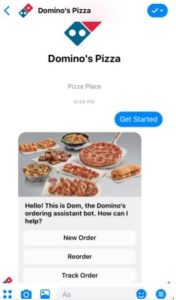
You can also gather information about their likes, dislikes and purchasing habits, and the chatbot can be programmed to reach out to individual consumers and offer personalized, relevant content.
For example, you can remind a customer about an item in their cart. Or, if they leave a positive review on your page, ask them to come back and offer them a discount code.
Marriott Rewards uses bots to re-engage their Marriott and Starwood rewards accounts. Through the bot, customers can enter dates in a city and receive booking suggestions. Marriott then provides content from their magazine to help the customer prep for their upcoming trip.
- With the right scripting, your chatbot can automatically push sales messaging, and even make a sale, with your audience. The bot can re-engage customers who previously interacted with your website, put an item in their cart, or downloaded a digital product.
1-800-Flowers gives customers the ability to order flowers through Messenger without going to the website or calling the phone number. The bot takes the customer through different steps and options, like providing the recipients first and last name, phone number and address, the floral selection, and even taking your payment.
5. Work leads. Similar to re-engaging your prospects, you can use chatbots to build a relationship with your prospect, guide leads through the marketing funnel, and eventually convert to a paying customer.
For example, a pop-up on your website offers the opportunity to download a free whitepaper or e-book with information related to your products or industry. To download the e-book, the prospect can send it to Messenger. By using cookie data, you can automatically have their Facebook profile populated, or give them the opportunity to enter their email and password and log in to Facebook.
Once they provide you their information and click Send, you can send them the e-book, and add them to your contact list. In the following days, weeks, and months, you can automatically send them additional offers, downloads and information to engage and interact.
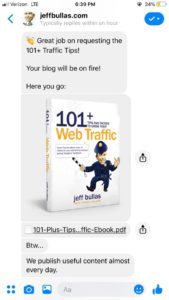
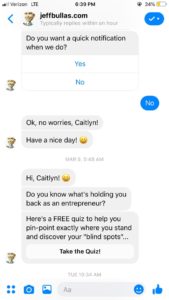
Many consumers hesitate to enter their email address to get information or purchase a product out of fear the email address will be sold or shared with other companies without their permission. This hesitancy can make it difficult to grow your email address list. However, with chatbots, the user is opting in to communication by contacting you first, allowing you to re-engage with them, earn their trust, and build a relationship.
Why chatbots are better than email
Email marketing is not going away. In fact, 95% of companies using marketing automation take advantage of email marketing for customer acquisition and retention. According to Constant Contact, almost half the world’s population uses email, and nearly 250 billion emails are sent every day.
They also report for every $1 you spend, you can expect a $40-$45 return.
However, the new chatbot technology provides an immediate, two-way communication solution via artificial intelligence that directly, and personally, reaches your consumer. In fact, Messenger chats have a 70-80% open rate within the first hour, compared to just under 18% for marketing emails.
Some reasons experts report chatbots are more effective than email include:
- Security. You have no email address to sell or customer information to share without consent. When interacting with a Messenger chatbot, the customer has to initiate the contact. There is no wondering how a company got your information, or worrying about what they are or will do with it.
- Make purchases and send money. Customers can purchase your product or service through a series of questions in the chat, and even enter credit card or PayPal information to make payments.
- Immediate. Chatbots are automated, so there’s no waiting for customer service representatives to sort through hundreds or thousands of emails to find and answer yours. You can even send and receive audio messages.
- Group chats. Unlike an email string with multiple recipients, which is easy to get lost in or behind on, group chats through Messenger are easy to follow and search, much like a text message conversation. You can easily follow the path of the messages, and who sends what, when.
- Personal and “human.” Facebook and Facebook Messenger are typically used to communicate with friends and family. While emails from a business or third party can seem intrusive, Messenger is considered more friendly, personal and meaningful. And, since the customer has to initiate the contact, it reduces the feeling of being spammed.
- While emails can also send an automatic response, they cannot be personalized and have to remain rather general. They can’t answer specific questions or scenarios. Messenger allows for pre-populated, personal responses for a customized user experience.
- Higher engagement. This is because the user requested the engagement. They are looking for your content and want to interact with it.
How to create a Messenger bot
You can find a variety of tools online, some easier (and cheaper) than others, to help you create a chatbot. Examples include:
- Facebook Messenger API
- Chatfuel
- Botsify
- OnSequel
Generally, the two types of chatbot navigation include button-based navigation and natural language processing.
- Button-based navigation chatbots allow users to select from different menu options to lead them through the conversation and direct them toward the end goal.
- Natural language processing chatbots have the ability to ask open-ended questions and analyze the customer’s answers. Then, the bot will sort through its data to find a response that matches the user’s answer or question.
When you set up this bot, you would code trigger keywords into your chat pages to help the bot analyze the request and serve the correct responses.
Your chats can be static content, like text and images, or dynamic content, like forms and questions/answers. You can also send videos, e-books, gift cards and more.
How do your customers find you?
The four primary ways customers find and activate your chatbots are through Messenger buttons, Messenger codes, Messenger links or Customer Matching.
- Messenger Button: Typically the Facebook Messenger bubble icon, you can find one of these on your business Facebook profile, and you have the ability to add them to your website. By clicking, the customer is taken to the Messenger app and a message to you is opened.
- Messenger Code: These are created through Facebook and consist of a series of dots and dashes circling around your profile image. By scanning the code with their camera, the customer adds themselves as a contact and therefore opts-in to communications.
- Messenger Link: Like a URL for a website, you can publish a messenger link in your profile, on business cards, or on your website. By clicking or following the link, a message conversation will open. Find yours by going to Chats, tapping your profile picture, tapping the username below your name, and copying the link.
- Customer Matching: If you have phone number of a prospect or customer, as well as pre-existing permission to reach out to them (i.e. they subscribed to your email, purchased a product, etc.), you can find them via customer matching through Facebook’s algorithms.Note: If you do this, be sure to include a final opt-in or out through the first contact of the conversation.
Next Steps
Whether you are interested in chatbots for customer service, lead generation or nurturing, product promotions or sales, or discovery about your customers, experts at Hootsuite recommend keeping it simple. Bots can do a lot, but they can’t yet do everything. To set up an effective bot you must have the time and dollar investment it will take to build a successful strategy.
Chatbots are not only new to businesses, they are new to consumers. Their ability is still being learned by businesses and taught to users. By keeping it simple, you’re lowering your risk of drop in usage, which usually happens if more than five clicks are necessary to get to the desired outcome.
It’s also recommended to always have a real person standing by. Monitor any questions or experiences your chatbot can’t answer or handle, and optimize quickly. Also keep an eye on the overall customer experience and satisfaction. You and your customers will constantly be learning, adapting and optimizing your bot strategy to ensure its effectiveness.
About the Author
Caitlyn Callahan is a digital marketing writer for Dragonfly Digital Marketing. She has more than 10 years of experience in the journalism and communication fields and has worked for newspapers, magazines, and marketing teams for both large and small companies. Caitlyn lives in the Cincinnati, Ohio area and loves traveling, reading, being outdoors and her family, including her dog, Coco.

